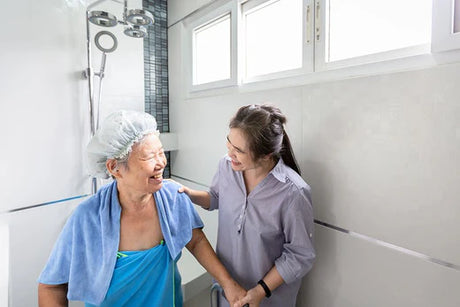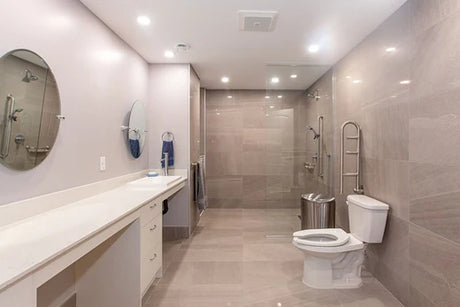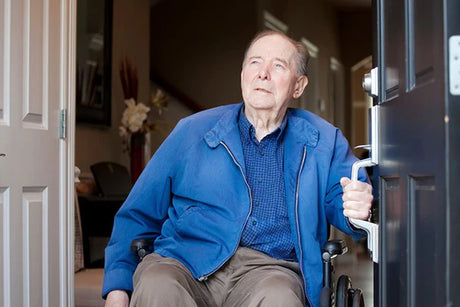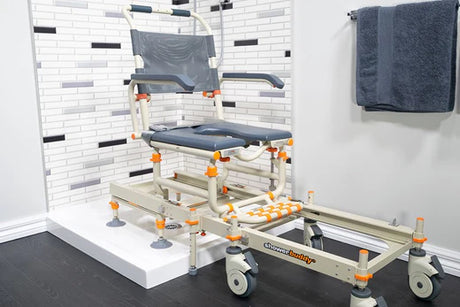Clean up the home of clutter
Going through each room and decluttering doesn’t necessarily mean reorganising items – you may wish to use the opportunity to reduce how much ‘stuff’ you have in the home and donate, sell or recycle things no longer needed.
This process is about making life easier for both the mobility impaired person, but for anyone else in the home who’ll provide assistance too. With less obstacles to worry about, it’s easier to focus on executing tasks like helping a loved one or client transfer onto a wheelchair, and move them through the home efficiently. It’s also important to ensure that emergency exits are swift.
Fix door thresholds
As part of the home review, check the doorways and look for some of the following:
- Has the carpet worn and scuffed where there is loose material sticking up out of the floor?
- If a metal trim, is the piece firmly in place, the full length across?
- Are there any nails/tacks that have come up slightly or are loose in the metal trim?
- Are there any loose parts of the doorway, such as wooden skirting?
You may need to get some outside help to do these repairs if significant, otherwise someone handy in your household may be able to attend to this. Having the thresholds in good shape saves headaches down the track.
Ensure all lightbulbs are replaced and bright
In other parts of the house, a lack of light combined with fatigue is a recipe for accidents. The good news is that replacing lighting isn’t usually very expensive compared to other house modifications or maintenance.

Rearrange furniture to create easy pathways around the home
Place portable ramps around key exits
Bring objects down within reach
Recruit the whole household
For everyone else, ensure they’re thinking about the following:
- Are there any hazards in the room you’re leaving that could cause issues for your mobility impaired loved one?
- Is this the best place for a specific object or piece of furniture?
- Is the bathroom kept dry and clean?
- Are there any barriers towards a quick exit in an emergency?
- Have I cleared the floor of loose laundry?
- Have I asked my loved one what concerns they have around the home and how can I help?
If you’re unsure about how best to provide help preparing your home, chat with your loved one’s occupational therapist; they’ll guide you with advice to make the house ready.
Further reading
Enjoyed this article? You may be interested in these resources online:
- How to maintain and improve mobility and reduce falls – AgedCare Guide
- 5 Home Safety Tips for Seniors to Prevent Falls – Life Way Mobility
- Falls prevention – Age Concern
















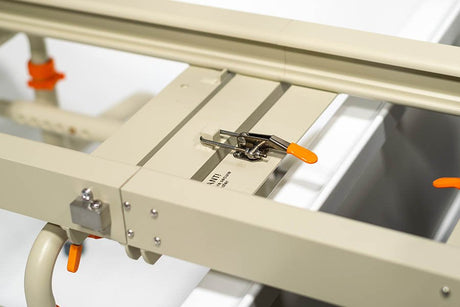











![Toilet Training A Young Child With Mobility Challenges [And How A Shower Chair Can Help]](http://shower-buddy.com/cdn/shop/articles/toilet-training-disabled-child_520x500_a90e5234-d372-435d-aa56-8da15dd3836c.webp?v=1722557239&width=460)







